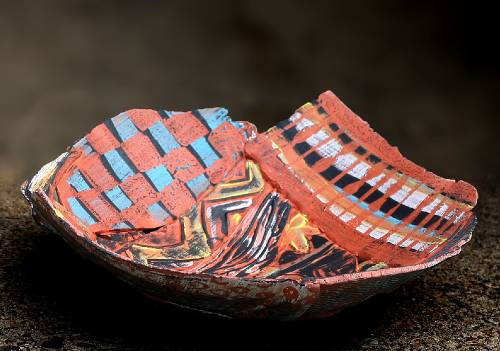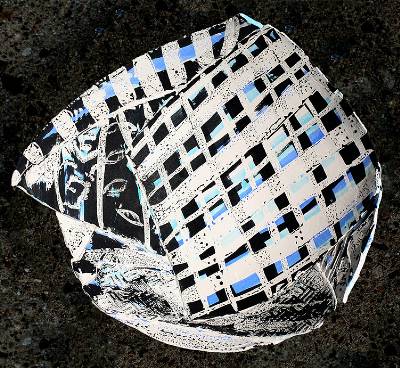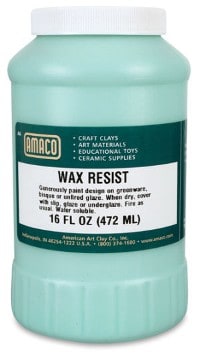| Pottery - Wax Resist | ||||
|
||||
Wax resist is a liquid that can be painted on pottery. When it dries it forms a water repellant layer on the surface of the pot. This means that when liquids like glaze, underglaze, or slip are then applied to the pottery the waxed areas don’t absorb the liquids.
Wax resist can therefore be used to create patterns on the pottery by creating unglazed or uncolored areas of clay. In that way, wax resist can be used a bit like a stencil that you paint directly onto your pottery.There are many ways to use wax resist as a way of decorating pottery. Here are just a few: Wax Resist Method 1 Paint your design onto the surface of your pottery using wax resist. You can paint the wax resist onto leather hard pottery or bisque ware. However, it dries more quickly on bisque ware. This can be an advantage because you avoid getting drips in the wax design. Then apply either underglaze or glaze over the wax design. If any of the glaze balls up on the wax resist surface, you can wipe this away easily. When you fire the pottery, the wax resist burns away, leaving the design intact, with that area of your pot unglazed.
Ceramic Bowl 2001 and Image by Lisa Sheirer (CC BY-SA 2.0) Wax Resist Method 2 You can create interesting glaze effects using wax resist. For example, you can apply one layer of glaze, and then paint a wax resist design on the first layer of glaze. Then if you apply a second different glaze, the original glaze shows through under the second coat of glaze when the piece is glaze fired. Amaco Wax Resist – View on Blick Wax Resist Method 3 Wax resist can also be used when you make Mishima pottery. You apply a layer of wax resist to your leather hard piece, then you carve into the pot through the waxy coating. After you have carved your design, you can apply a layer of underglaze to the carved areas. The excess underglaze around the surrounding area can easily be wiped away. When you fire your pot, the wax burns away, to leave a neatly incised and colored design on your bisque ware.
Reference - thepotterywheel.com -
|
||||
About Me | Contact Me | Site Map
Property of Mr. D - 2023


